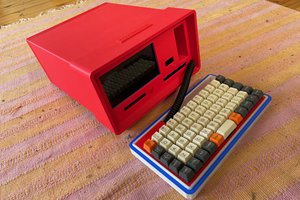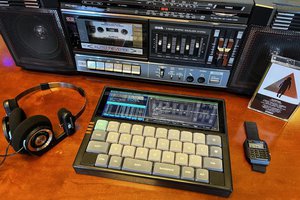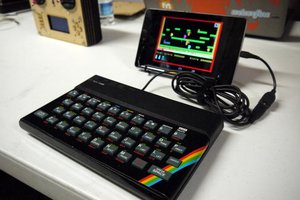WHY?
The idea for this project was born when a recently bought , old Infinium oscilloscope booted up showing a dreaded message from the past : "Keyboard error . Press F1 to continue" . Of course the scope does not have an USB connector , and buying a PC/AT keyboard only to change one BIOS setting and poke the scope system from time to time , seemed to be a waste of space. Some older USB keyboards were able to be used in PS/2 mode with a simple converter , but unfortunately none of my keyboards have this feature. Using the Raspberry Pi as a converter may look like an overkill , but is much simpler than the alternative - programming the USB host HID on the microcontroller.
HARDWARE
The GPIO ports of the Raspberry Pi use a 3.3V logic , while the PC needs 5V TTL signals. Whats more , the Pi is known to be easily damaged with voltages higher than 3.3V. The logic level shifter uses NPN transistors in common-base configuration to turn the low voltage signals into 5V TTL signals while the GPIO input voltage is clamped with diodes.
SOFTWARE
The software reads keyboard events form system /dev/input/event0 device. The events contain XT compatible scancodes , which are translated into AT scancodes and then bit-banged onto GPIO pins. Since the timing of the signals is critical , the timing function from the WiringPi library is used instead of the system usleep or nanosleep . The emulator software also listens to the keyboard interface in order to capture the commands send from the computer to the keyboard and acknowledge them . Without this function the computer won't recognize the emulated keyboard.
INSTALLATION (Raspbian 9)
1) Install wiringPi library :
sudo apt-get install wiringpi
2) Compile and install software :
gcc pskbd.c -lwiringPi -o pskbd
sudo cp ./pskbd /usr/local/bin
3) Add following line to the /etc/rc.local file before the "exit 0" line :
/usr/local/bin/pskbd & > /dev/null

 David Tillemans
David Tillemans
 Greg Leo
Greg Leo
 Richard
Richard
 Alistair MacDonald
Alistair MacDonald